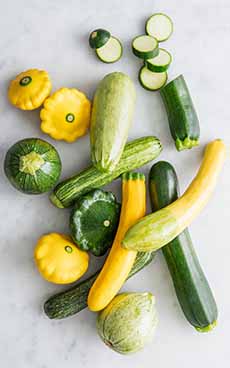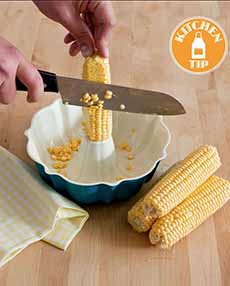PRODUCT: Cassoulet Beans For A Summer Cassoulet
|
|
Most of us think of cassoulet as a winter dish, chock full of hearty meats like duck, pork, sausage and beans (photo #6). The most famous bean for a traditional cassoulet but versatile enough to become an everyday favorite. The recipe below (photo #1) is a summer version that uses a different bean. Here’s the story, from Steve Sando, America’s rare bean guru and proprietor of Rancho Gordo beans. “I first enjoyed French Tarbais beans [from Tarbes, France] made by the great Paula Wolfert. “I had been recommending flageolet, another great French legume, for the dish, cassoulet. “It turned out that Tarbais and Flageolet are very different. You can make a cassoulet with the Flageolet but the Tarbais has thinner skin and all the ingredients involved with this slow-cooked masterpiece seem to get along better with the Tarbais.” It was a revelation. Sando acquired seeds from Tarbes to grow in California (photo #2). Out of respect for the terroir* and the French farmers, he re-christened them as Cassoulet beans. “They are delicious on their own and it would be a shame to save them only for cassoulet,” says Sando. “My favorite Bean Buddy (and co-author of The Rancho Gordo Vegetarian Kitchen), Julia Newberry, came up with the following dish, perfect for your Cassoulet beans and your finest summer crops. In addition to casseroles, Tarbais beans are also excellent for baked beans and pot beans; and in dips, fagioli, salads and soups. In fact, every bean sourced by Rancho Gordo delivers a superior flavor and performance. We give bags (photo #3) as gifts. But note: When a particular bean sells out, it won’t be available until the next harvest. This recipe from Julia Newberry uses some optional pancetta or bacon for a smoky flavor. It is easy to adapt to a vegetarian or vegan dish. After you cook the beans, which you can do the day before, the dish comes together in under an hour. Here’s how Rancho Gordo recommends that you cook the beans. 1. PREHEAT the oven to 350°F. Lightly grease an ovenproof gratin dish. 2. MELT the butter in a small skillet over medium-high heat. Add the breadcrumbs and stir, frying until light golden. Set aside. 3. ARRANGE the tomato slices so they cover the bottom of the dish. Add a layer of squash slices, then top with corn kernels and cherry tomatoes. Save about one-fourth of the squash, corn and cherry tomatoes for the top layer. 4. SPRINKLE the first squash layer with the minced garlic, lemon zest, and salt and pepper to taste. Add a layer of beans on top of the vegetables. Pour about 1/4 cup of bean broth over the beans (just enough to wet them). 5. ADD another layer of squash, corn and cherry tomatoes. Top with the breadcrumbs and pancetta. Drizzle with olive oil or, if you prefer, dot with butter. 5. BAKE for about 30 minutes, until the breadcrumbs are golden and the squash is tender. Before serving, drizzle with a bit more olive oil (or a few more dots of butter) and dust with a generous amount of cheese, fresh herbs and more lemon zest. NOTE for pressure cooker users: Cook the unsoaked beans in an Instant Pot for 40 minutes, with natural pressure release (NPR). Beans are a genus in the Fabaceae family, which is commonly known as the legume, pea, or bean family. In addition to beans, chickpeas, peas and soybeans, the family includes other foods such as alfalfa sprouts, carob, licorice and peanuts (plus, numerous non-foods). Beans are one of the earliest-cultivated plants and have been a staple food and an important source of protein from pre-history onward. They can be dried and stored for years, maintaining their nutrition and ensuring there would be food during lean times. Nutritious, beans are rich in complex carbohydrates, fiber, folate, and iron and protein. While beans no doubt grew wild for many millennia, the earliest archaeological evidence to date, from Thailand, shows that beans were cultivated almost 12,000 years ago(carbon dated to 9750 B.C.E.). Evidence also suggests that the native people of Mexico and Peru were cultivating bean crops as far back as 7000 B.C.E. But before cultivation in the West, around 7000 B.C.E., wild broad beans (fava beans), were gathered in Afghanistan and the Himalayan foothills—the size of a small fingernail. These Old World beans were not cultivated until the second millennium B.C.E. At that time, large-seeded broad beans appear in the Aegean, Iberia and transalpine Europe. About the same time, beans found at an archaeological site in Peru showed that beans appeared everywhere from Asia to Europe and the Americas. everywhere and where one of the staple foods of the early peoples [source]. The early farmers who grew beans also grew grains (barley, corn, millet, rice or wheat). |
|
|
Beans and grains have a symbiotic nutritional relationship, in which the amino acids of each complement the other so as to form a complete protein. This is why, even in the absence of animal proteins in the diet, the combination provides the foundation for human growth and development. In addition to everyday folk, beans were enjoyed by the elite: They were buried with the kings of ancient Egypt. In 17th-century America, When the first colonists arrived, Native Americans taught them to grow beans together with corn so the bean plants could climb the corn stalks. There are many different types of beans grown worldwide—from soybeans initially from Asia to ceci beans (chickpeas) from the middle east to Phaseolus vulgaris, also known as the common bean and French bean, which is native to Mesoamerica†. Beans are now grown on every continent, except Antarctica. New World varieties include black beans, cranberry beans, kidney beans, lima beans, navy beans, pinto beans and many others. ________________ *Terroir, pronounced tur-WAH, is the French word for soil, land or terrain. It can be loosely translated as “a sense of place,”the sum of the effects that the environment has on the creation of what is grown there. It has long been used in wine and coffee analysis to denote the special characteristics of soil, climate, weather, geology, aspect (how many hours it gets direct sunlight, e.g.) and altitude that give the grape or bean its individuality. The term is now being used, appropriately, to describe other agricultural products. The original Tarbais bean is a New World bean and most likely originated in Mexico. The Tarbais beans were developed by generations of farmers in Tarbes, France. Once it was cultivated there, it expressed the characteristics of its particular terroir (soil, climate, etc.). Given that Rancho Gordo’s beans are grown in a California terroir, they decided to call it the Cassoulet Bean to avoid confusion (and price—imported Tarbais beans are much more expensive). †Three native Mesoamerican crops, beans, corn (maize) and squash, constitute the “Three Sisters” crops that were central to indigenous North American agriculture. ‡In Roman antiquity, this was Gallia Transalpina, the land bounded by the Alps, the Mediterranean, the Pyrenees, the Atlantic, and the Rhine. It included what is now France and Belgium, along with parts of Germany, the Netherlands and Switzerland.
|
||









